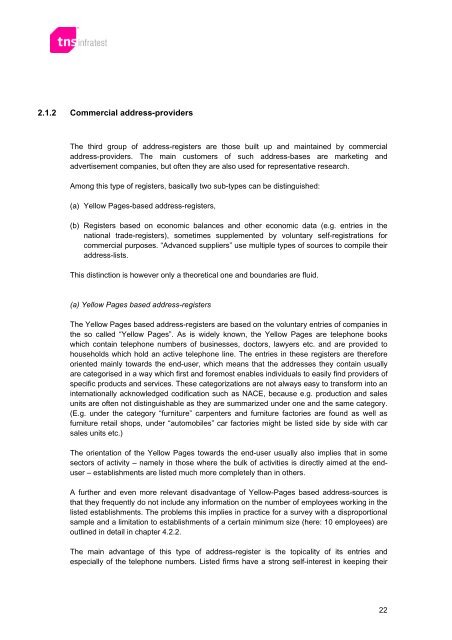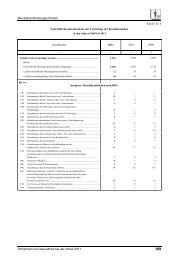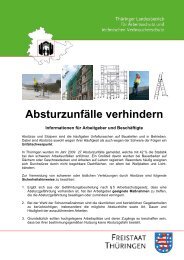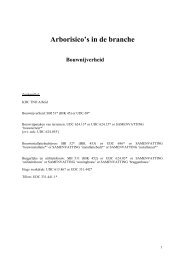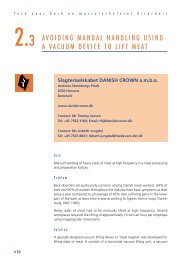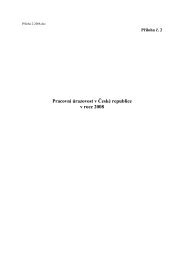ESENER-PSR 2009 - European Agency for Safety and Health at Work
ESENER-PSR 2009 - European Agency for Safety and Health at Work
ESENER-PSR 2009 - European Agency for Safety and Health at Work
You also want an ePaper? Increase the reach of your titles
YUMPU automatically turns print PDFs into web optimized ePapers that Google loves.
2.1.2 Commercial address-providers<br />
The third group of address-registers are those built up <strong>and</strong> maintained by commercial<br />
address-providers. The main customers of such address-bases are marketing <strong>and</strong><br />
advertisement companies, but often they are also used <strong>for</strong> represent<strong>at</strong>ive research.<br />
Among this type of registers, basically two sub-types can be distinguished:<br />
(a) Yellow Pages-based address-registers,<br />
(b) Registers based on economic balances <strong>and</strong> other economic d<strong>at</strong>a (e.g. entries in the<br />
n<strong>at</strong>ional trade-registers), sometimes supplemented by voluntary self-registr<strong>at</strong>ions <strong>for</strong><br />
commercial purposes. “Advanced suppliers” use multiple types of sources to compile their<br />
address-lists.<br />
This distinction is however only a theoretical one <strong>and</strong> boundaries are fluid.<br />
(a) Yellow Pages based address-registers<br />
The Yellow Pages based address-registers are based on the voluntary entries of companies in<br />
the so called “Yellow Pages”. As is widely known, the Yellow Pages are telephone books<br />
which contain telephone numbers of businesses, doctors, lawyers etc. <strong>and</strong> are provided to<br />
households which hold an active telephone line. The entries in these registers are there<strong>for</strong>e<br />
oriented mainly towards the end-user, which means th<strong>at</strong> the addresses they contain usually<br />
are c<strong>at</strong>egorised in a way which first <strong>and</strong> <strong>for</strong>emost enables individuals to easily find providers of<br />
specific products <strong>and</strong> services. These c<strong>at</strong>egoriz<strong>at</strong>ions are not always easy to trans<strong>for</strong>m into an<br />
intern<strong>at</strong>ionally acknowledged codific<strong>at</strong>ion such as NACE, because e.g. production <strong>and</strong> sales<br />
units are often not distinguishable as they are summarized under one <strong>and</strong> the same c<strong>at</strong>egory.<br />
(E.g. under the c<strong>at</strong>egory “furniture” carpenters <strong>and</strong> furniture factories are found as well as<br />
furniture retail shops, under “automobiles” car factories might be listed side by side with car<br />
sales units etc.)<br />
The orient<strong>at</strong>ion of the Yellow Pages towards the end-user usually also implies th<strong>at</strong> in some<br />
sectors of activity – namely in those where the bulk of activities is directly aimed <strong>at</strong> the enduser<br />
– establishments are listed much more completely than in others.<br />
A further <strong>and</strong> even more relevant disadvantage of Yellow-Pages based address-sources is<br />
th<strong>at</strong> they frequently do not include any in<strong>for</strong>m<strong>at</strong>ion on the number of employees working in the<br />
listed establishments. The problems this implies in practice <strong>for</strong> a survey with a disproportional<br />
sample <strong>and</strong> a limit<strong>at</strong>ion to establishments of a certain minimum size (here: 10 employees) are<br />
outlined in detail in chapter 4.2.2.<br />
The main advantage of this type of address-register is the topicality of its entries <strong>and</strong><br />
especially of the telephone numbers. Listed firms have a strong self-interest in keeping their<br />
22


